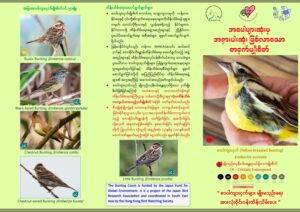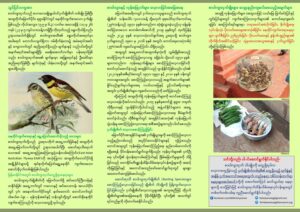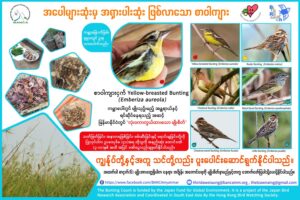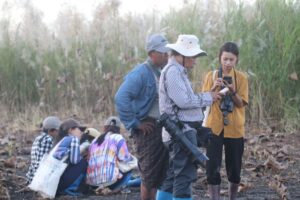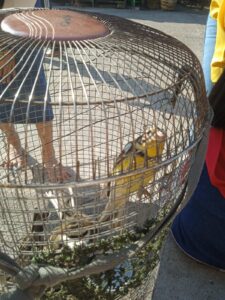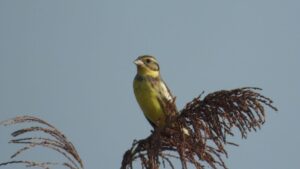This bright-yellow bird may look like another colorful songbird, but in parts of China and Southeast Asia it is eaten as a delicacy. The Yellow-breasted Bunting was commonly found as far away as Finland, but has all but disappeared from Europe and the northern parts of Siberia and Japan. The birds migrate mostly from Siberia to wintering grounds in China and the countries of Southeast Asia. According to BirdLife International—this Bunting is registered as critically endangered by the IUCN Red List. BANCA has been conducted the winter Bunting in Myanmar since 2022 by participating with Asia Bunting count network.
For this year, the winter Bunting count was started from October 2023 to March 2024 throughout Myanmar. In this Bunting count, we targeted six species of Bunting on Yellow-breasted Bunting, Rustic, Chestnut, Black-faced, Chestnut-eared and Little Bunting, and in-depth study on Yellow-breasted Bunting. However, we conducted the bunting counting for only five species apart from Rustic Bunting as not in Myanmar.
Before we have started the bunting count in October, we held national workshop mainly on the future of land bird monitoring and conservation especially counting of Bunting species in Myanmar at Hlaing Tet Hotel in Yangon on 6th October 2023. Altogether 21 participants from individual bird experts of land bird speices, University, NGOs/INGOs in person and 9 online participants from individual bird experts within Myanmar.
We conducted coordinated bunting count and shared the information through email and Facebook group. We produced the poster about the information of Bunting count and distributed this poster to all stakeholders. In the comprehensive survey of Yellow-breasted Bunting, we collected the population of YBB from roosting counts at tall grasses where is in Kyone kapyin Tat seik community conservation area, Kyone Kapyin, Warkhema Township, Ayeyarwaddy Region in every first two weeks from October 2023 to February 2024. We counted the population by estimating 500 individual per minutes according to the time of high population.
Our counting was started from 5:30 pm to 6:00 pm. We recorded that 5733 individuals in October, 12,366 in November, 38,028 in December, 37,709 individual in January and 36491 in February. The tall grasses serve as the primary habitat for feeding and roosting for Yellow-breasted Bunting, covering an area of 8.09 ha during the wintering season. In February 2024, we found the new site for YBB according to the local information.
We recorded over 300 individuals of YBB from roosting count in tall grasses close to water. Apart from Yellow-breasted Bunting, we collected the information of other five Bunting species by bird experts within Myanmar. A total of 52 individuals of Little Bunting in Kachin and Shan states, 17 of Black-faced Bunting in Kachin, Shan and Ayeyarwaddy, 15 of Chestnut-eared Bunting in Kachin and two individuals of Chestnut Bunting in Kachin and Shan states were recorded.
In Myanmar, we have been facing challenges to protect not only Bunting species but also passerines species due to the habitat loss for agriculture and infrastructure development purposes and bird hunting for releasing. During the counting period, we faced challenges in gathering information on Bunting population across various region of Myanmar due to security concerns for bird experts amid the deteriorating political situation. However, we actively participated in the online land bird conference on March 8th 2024 and where we shared our findings on the situation of Bunting species in Myanmar.
This conference served as a crucial platform for fostering collaboration within the Asian network for the conservation of land bird species on a global scale. The Bunting count is funded by the Japan Fund for Global Environment. It is a project of the Japan Bird Research Association and Coordinated in South East Asia by the Hong Kong Bird Watching Society.


